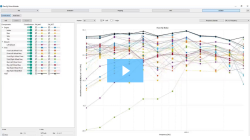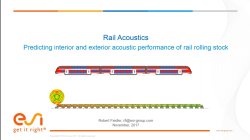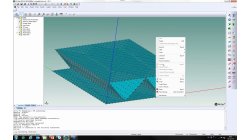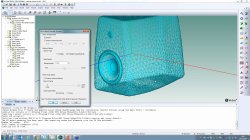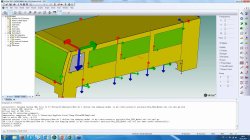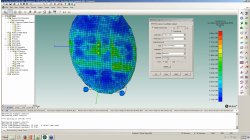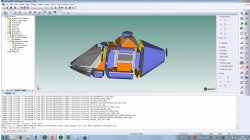- Home
- リソース
- オンラインセミナー動画
オンラインセミナー
ESIの製品、ソリューション、サービスについてもっと知るには、 近日予定のオンラインセミナーをご覧ください。
How do I stimulate Pass By Noise for component level contribution assessment? (Hands-On Webinar #02)
Highlights of the webinar: Provide capability to predict Pass By Noise performance early in the design cycle Pass By Noise prediction allows engineers to meet legislative targets as proposed by the new ISO PBN directive
Vibro-Acoustics
Rail Acoustics: Predicting interior and exterior acoustic performance of rail rolling stock
Webinar showcases ESI Vibro-Acoustics and end-to-end solution for the rail industry Topic: Vibro-Acoustics for Rail Highlights of the webinar: Interior Noise Prediction Pass By Noise Assessment Speech Clarity Assessment Aero Vibro-Acoustics Noise Prediction
Vibro-Acoustics
How do I model complex floating floor configurations
Designers in both the aerospace and rail industries use complex honeycomb or extruded panels for floating configurations. Due to the complexity of these designs, obtaining accurate vibro acoustic performance models can be challenging. See how the periodic module in VA One can be used to provide a de...
Vibro-Acoustics
How do I determine transmission loss on the full frequency range
Research has shown that the low frequency performance of noise control treatments is an important consideration above certain frequency thresholds. Adding non-structural mass for cavity absorption and damping ratios for the trim effect on structures does not represent the physics accurately. See ESI...
Vibro-Acoustics
How do I determine a structureborne response of a fully trimmed vehicle
The use of low frequency models to predict structure born performance of trimmed structures is often ignored due to the complexity of deploying deterministic models of structure, multilayer noise control treatment and interior civility that are harmonised to provide overall vibro acoustic performanc...
Vibro-Acoustics
How do I create a vibro-acoustic model of a loudspeaker
In many applications, public address systems need to be audible at each passenger location. Test based qualification can be expensive if the response needs to be measured at many different locations across several different product configurations. See how VA One can be used to create effective mode...
Vibro-Acoustics
How do I define the damping model in my vibro-acoustic analysis
The definition of damping in a vibro-acoustic model is crucial for predicting accurate results in simulations. However, getting information about the real damping of a structure is often a bottleneck, thus inducing high importance of having the right tools to define the damping in a model. This W...
Vibro-Acoustics
How do I choose the BEM solver for my application and how can I parallelize my BEM solve
Boundary Element Analysis (BEM) is considered the industry standard for low frequency acoustic radiation however, the effectiveness of BEM is often constrained by the availability of computational resources capable of processing increasingly large models. VA One uses both classical BEM solvers and a...
Vibro-Acoustics
How do I recover stress responses formed by sensitive space structures
A high intensity diffuse acoustic field surrounds a rocket during the initial launch stage. The intensity of this field is capable of compromising the integrity of composite fairings used to protect the payload and can also cause failure of composite components in space structures which form part of...
Vibro-Acoustics
How can I predict flow induced noise in aircraft interiors
Flow induced noise is a major contributor to interior noise in aircrafts. This webinar will demonstrate how VA One can be used to model the effect of noise arising from interaction, from a surrounding during flight conditions using source models of turbulent boundary layer.
Vibro-Acoustics
Pagination
